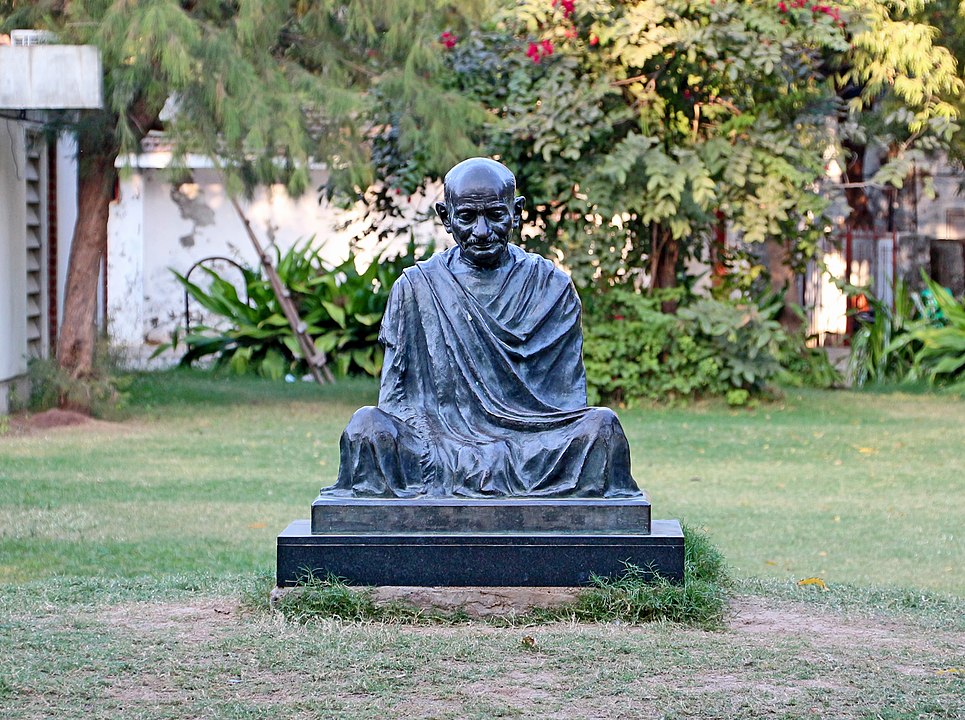You may not get the visual feast of a hill station, fun and frolics of a beach, delightful thrills of an adventure or serene experience of a temple visit, yet this place merits a compulsive visit despite not having any of these elements. The very basis why you shouldn’t afford to miss Sabarmati Ashram is the sheer simplicity that the place has for you. Moreover this place had been one of the many homes that Mahatma Gandhi lived during his lifetime.
Situated in the Sabarmati suburb of Ahmedabad and right on the banks of Sabarmati river, the ashram also known as Gandhi Ashram is quite close to the main railway station in Ahmedabad and the Townhall, an important place of the city. Unlike many religious ashrams, the complex is not that huge here. This is a smaller complex and you just need a couple of hours to walk through all the places of interest and attractions. But the quietude, calmness, serenity and simplicity creates such an atmosphere that you might end up spending a few more hours.
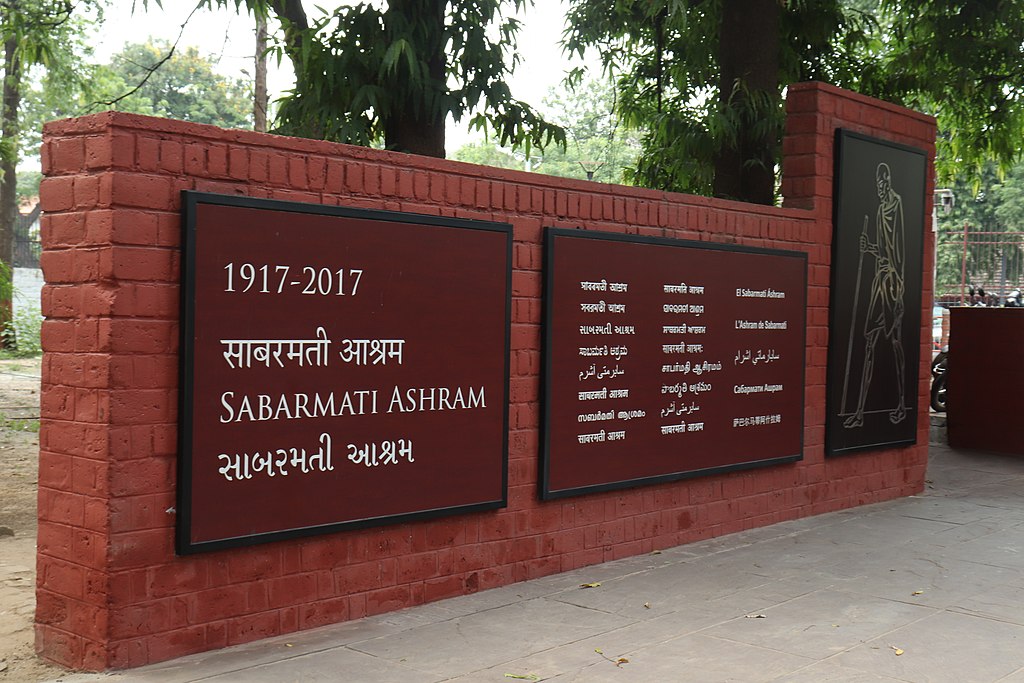
My first visit to the ashram was in 1995 and since then I was looking for an opportunity to come back again. The much awaited day arrived and recently I was fortunate enough to visit the place for one more time. When you are in Gujarat in general or Ahmedabad in particular make sure you are visiting Sabarmati Ashram.
Please also read 9 exotic places you must visit this summer holidays in 2021
Post Contents
A walking tour of Sabarmati Ashram
If you are coming to Ahmedabad by train and alighting at any stations like Ahmedabad Junction, Sabarmati railway station or Gandhigram station, then it will not take more than 15 minutes for you to reach Sabarmati Ashram which is located at Gandhi Road in the Sabarmati suburb of Ahmedabad. Red tiles roofed cottages greet you as you walk into the ashram premise that is spread over some 36 acres.
The first Ashram that Gandhi lived in India was at Kocharab Bungolow founded in the year 1915 and was known as Satyagraha Ashram. But there was the need for a much larger area as Gandhiji wanted to carry out farming and animal husbandry within the ashram premise. After a couple of years in 1917, the ashram was relocated to the present location on the banks of Sabarmati river. Mahatma Gandhi and his wife Kasturba lived here for about 12 years during which time it sought to prominence and came to be known as Sabarmati Ashram.
No sooner you enter the premise of Sabarmati Ashram, you begin to experience the solitude and simplicity that the place offers for visitors. That is the very strength of this ashram. And you just need to walk along to explore the different places of interest.
Let’s begin the walking tour.
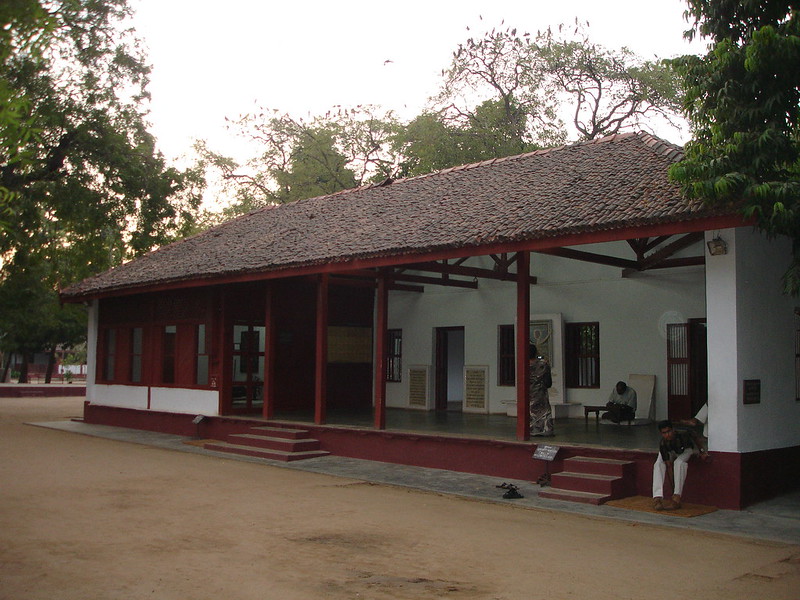
Suggested read Revisiting Bhima Bhoi and Mahima Dharma in Khaliapali
Hridaya Kunj
The first cottage that you walk into is Hridaya Kunj, house of Gandhi in the Ashram. As the name suggests this is the heart of the Ashram where Mahatma Gandhi and Kasturbaa Gandhi spent 12 years from 1918 to 1930. Kakasaheb Kalekar, a journalist and an ardent follower of Mahatma Gandhi had aptly named it Hridaya Kunj.
This is the place where Gandhi used to meet national and international personalities. From here the Indian national movement stemmed to become a freedom movement under the guidance of Mahatma Gandhi. You can see the house comprises six rooms including a guest house, store room and kitchen. There is also Gandhiji’s Charkha with the writing desk. The house gives you an idea about how simple a life Gandhi lived.
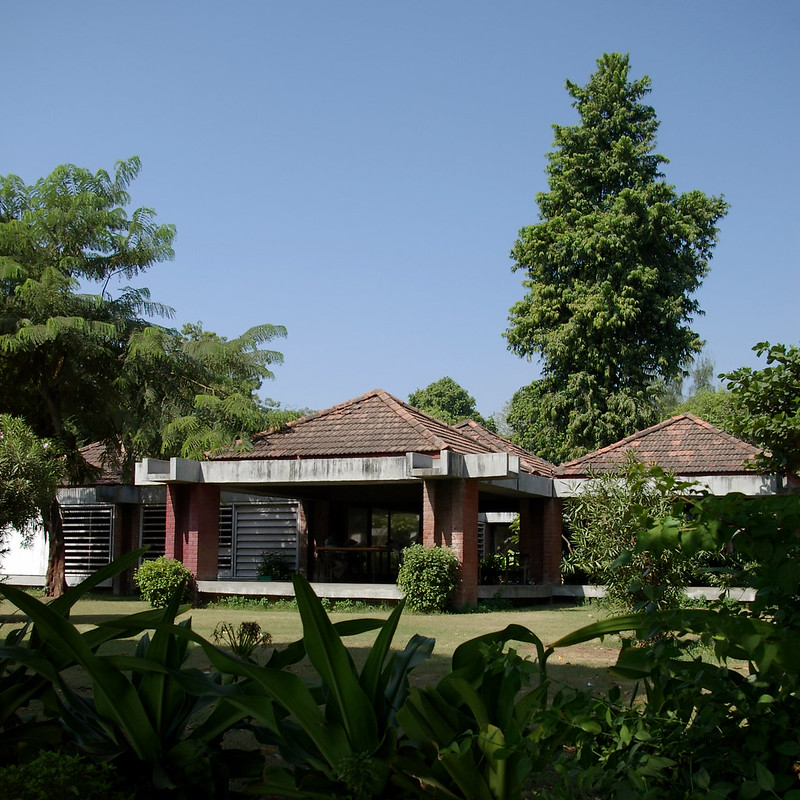
Gandhi Memorial Museum
The next you step into Gandhi Sanghrayalaya or the Gandhi Memorial Museum housed in an iconic building designed by architect Charles Correa and inaugurated by the then prime minister Pandit Jawaharlal Nehru in 1963. During its inauguration Pandit Nehru had famously described, “Whatever little I have seen has been done with an understanding and of a sort which suits this holy place. There is nothing pretentious here, but in itself shows that is a very simple and lovely thing”.
The museum has three galleries on display namely Gandhi in Ahmedabad Gallery, My Life is My Message Gallery and Painting Gallery. The museum also houses the Ashram Library.
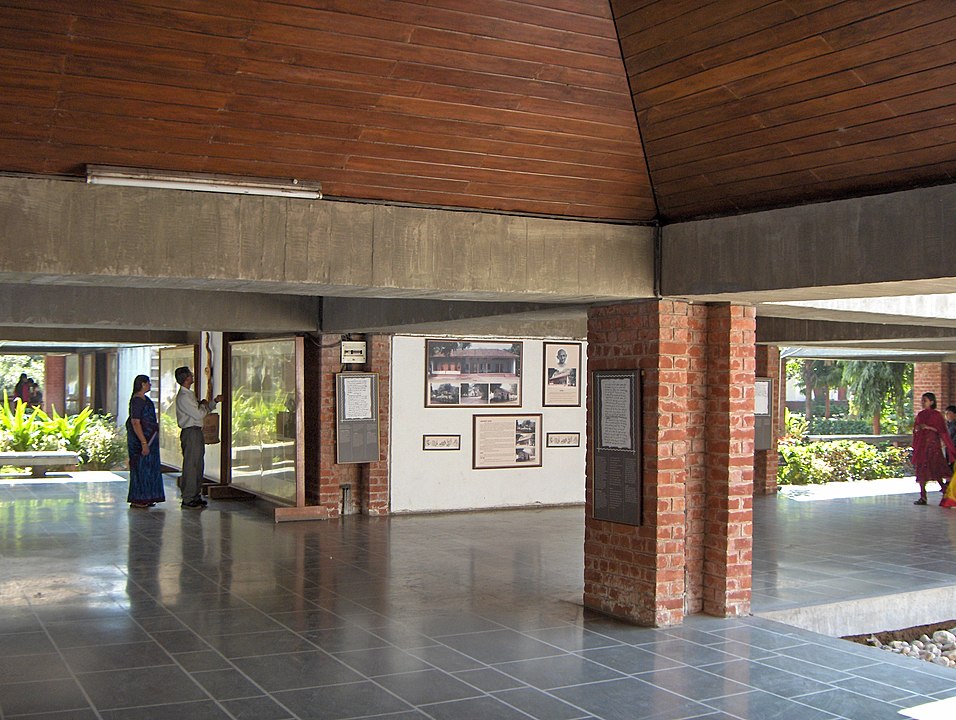
Gandhi in Ahmedabad Gallery: This gallery is dedicated to the events that occurred during Mahatma Gandhi’s 15 years stint in Ahmedabad from 1915 to 1930 after his return from South Africa. You can see there are 50 hand drawn panels arranged in chronological order that depict events like the establishment of Kocharab Ashram, the mill workers and owner dispute, the champaran Satyagraha, the Swadeshi movement and the Dandi Salt march. The exhibits are in question and answer format for helping visitors to have a deeper understanding of Gandhiji;s Satyagraha movement.
My Life is My Message Gallery: The exhibits in this gallery tells the story of the journey Mahatma Gandhi’s life, from his birth in Por Bandar to his assassination in New Delhi in January 30, 1948. While visiting Bengal Gandhi was asked to give a message to the nation to which he replied, “My Life Is My Message”. Thus the gallery is named.
This gallery is the most inspiring part of the museum and you can see there are 250 photographs in exhibition organised in seven parts that chronicles the entire life of Mahatma Gandhi from his birth in Por Bandar to his life in England, the role he played in the Indian freedom struggle in South Africa and the multiple method he applied in the Indian freedom struggle finally leading to his assasination. The exhibits are accompanied by quotes from original texts for proper understanding and deeper insights into things that was Gandhi as an institution.
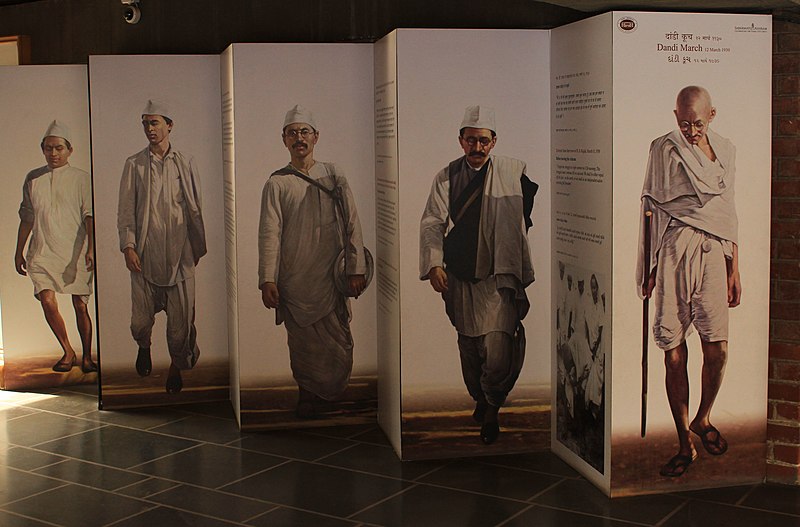
You also like Everything you need to know about Ranipur Jharial temples
Painting Gallery: You can see there are eight paintings in this gallery showcasing Mahatma Gandhi in various poses in different activities such as Marching, Spinning, Meditating etc. These portraits were painted in the 1960s by two accomplished artists namely Chandulal Shah and Hiralal Khatri who were also textile merchants. The paintings were handed over to the museum where they now found a place in the gallery. One of the main attractions in the gallery is a unique portrait of Gandhi by Rajkishore Kapoor which is composed of groundnut shells heated at varying temperatures to create a detailed and accurate rendition of Gandhi.
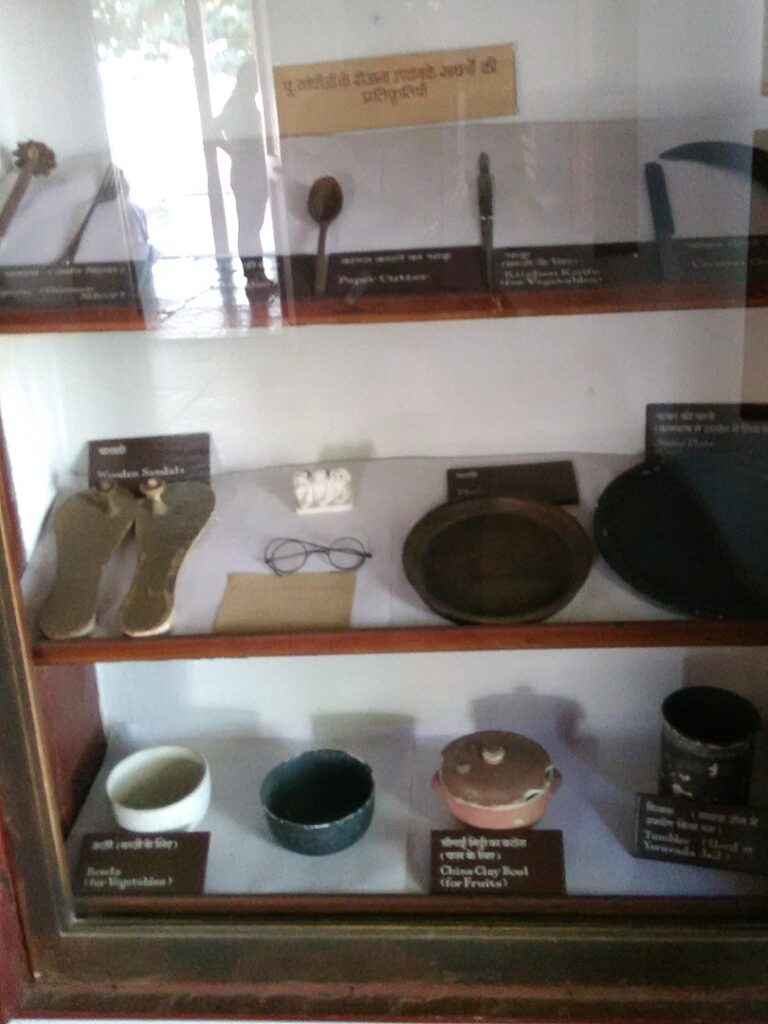
Archives and Library: The memorial museum boasts a sizable collection of manuscripts of Mahatma Gandhi’s writings during his stay in Sabarmati Ashram. The museum is also home to some 34,111 letters either written to Gandhiji or from him. You can see both original and photostat copies of the letters in the archive. You also have the chance to look at the 1371 manuscripts of the articles that Gandhi wrote for journals like ‘Navajivan’, ‘Young India’ and ‘Harijan’ available in English, Hindi and Gujarati.
The archive also has some 210 films in English, Hindi and Gujarati which depict the life of Gandhi and some rare movies of the 1940s. The archive and library also contain video cassettes, audio cassettes, some 50,000 books including rare ones on Indian freedom struggle, a diary maintaining address for the purpose of correspondence and 6,000 photo negatives.
Museum Shop: The museum complex also houses a shop showcasing various products of the Ashram which you can buy. This includes books,postcards, stamps, charkha models, pen drives, keychains, khadi, statues, crystals and stationary. You can also order online with details of the products and shipping address at sales@gandhiashramsabarmati.org.
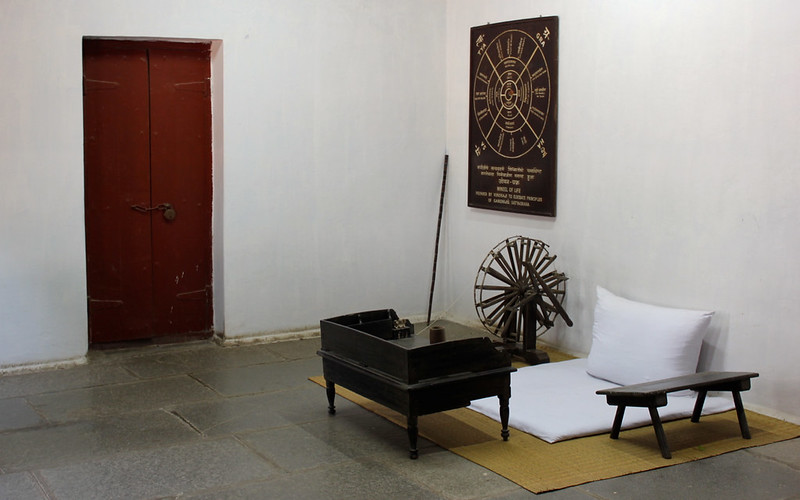
Plaese also read Gingee fort: 5 amazing facts that make it a must visit
Magan Niwas
Now you step into Magan Niwas, the place where Maganlal Gandhi resided in the Ashram. Maganlal was the nephew of Gandhi and his true follower since his Phoenix Ashram days in South Africa. Gandhi referred to him as the ‘soul of the Ashram’. He was the manager of the Ashram and he introduced many upgraded designs of Charkha, the spinning wheel in the Ashram which became the symbol of revolution and gave birth to Khadi. He had died early while in Ashram to which Gandhiji had remarked, “I have been widowed;.
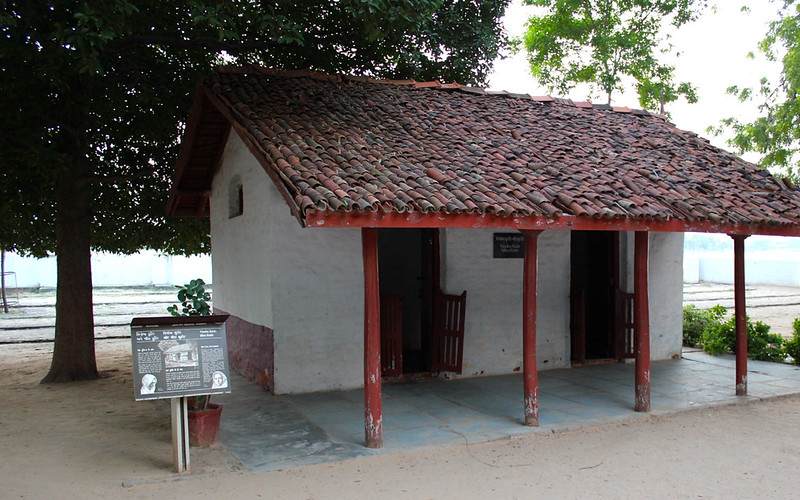
Vinoba-Mira Kutir
At a little distance from the cluster you come across a small cottage where two different inmates stayed at different times. Acharya Vinoba Bhave whom Gandhi termed as a true Satyagrahi for his total commitment to truth stayed here from 1918 to 1921 before leaving the Ashram to lead the Bhoodan Movement, a movement of land donation in India. Later Madeleine Slade, daughter of a British Admiral who was an ardent follower of Gandhi’s ideology joined the Ashram and stayed in the cottage from 1925 to 1933. Gandhi had given her the name Mira. Thus the cottage’s name Vinoba-Mira Kutir.
Nandini
This was the guest house of the Ashram. It hosted many national leaders and visitors including Pandit Jawaharlal Nehru, Rabindranath Tagor, Rajendra Prasad, Deenabandhu CF Andrews, Henry Polak and Maulana Abul Kalam Azad among others.
Upasana Mandir
Prayers formed an essential part of everyday life in Sabarmati Ashram. This is an open ground where both individual and congregational prayers were being held every morning and evening in the Ashram. Gandhji also stressed upon Bhagbat Gita which he said was ideal for Ashramic life. This is the site where Gandhiji used to deliver his ‘Discourse on Gita’.
Udyog Mandir
A cottage industry, this was founded in 1918 in the wake of the historic strike of mill workers in Ahmedabad. Gandhiji used to stay in one of the small rooms in this cottage. A ‘temple of industry it symbolized self-reliance and dignity of labour. It spread the message of ‘Swaraj though Khadi’ in the country.
Somnath Chhatralaya
This is a large building having 100 rooms which was used as community living. Students of the Ashram school, participants of Swadeshi and Constructive Work Training Programmes used to stay here. All strictly followed the Ashram rules including those of common kitchen.
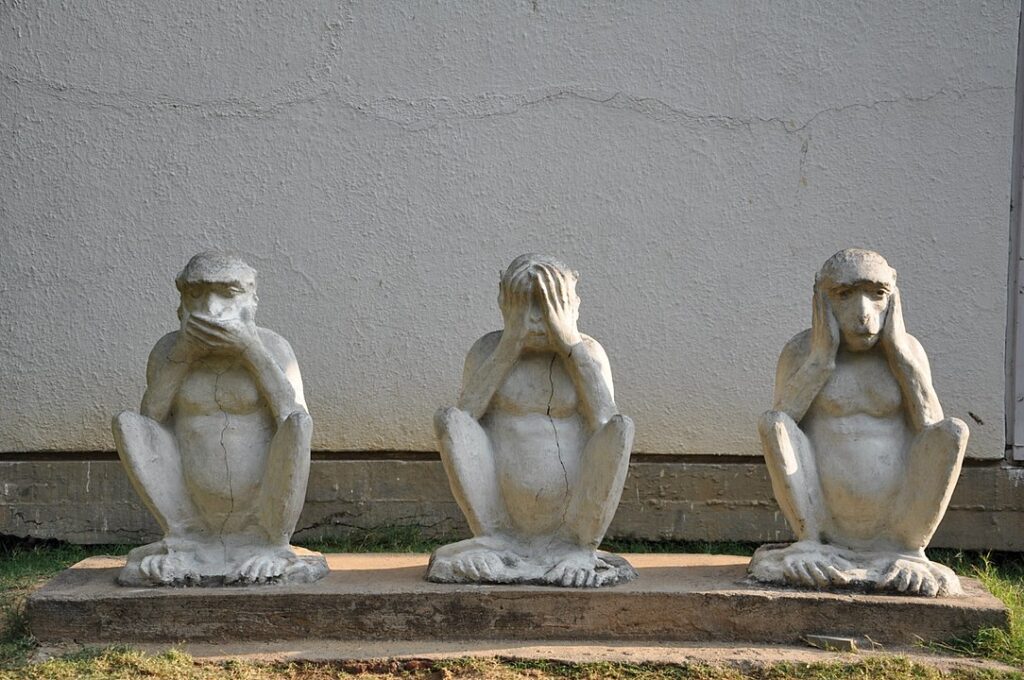
Also read Visiting the land of Ramana Maharshi and Arunachaleswar
Sabarmati Ashram: Where simplicity speaks volumes
A place that centered around the life and works of Mahatma Gandhi, Sabarmati Ashram exemplifies simplicity at its best. Simplicity was Mahatma Gandhi’s greatest strength that is unparalleled. Simple living and high thinking was his philosophy which was amply reflected in his ideas and way of living. You can see the Ashram exuding Gandhi’s philosophy of simplicity.
Simplicity and minimalism are the key words in the Ashram. Sparsely furnished rooms, simple architecture and untouched public spaces naturally define the place. It is with Gandhi’s basic philosophy of simple living and high thinking. Another notable feature is cleanliness – the ashram has been maintained immaculately.
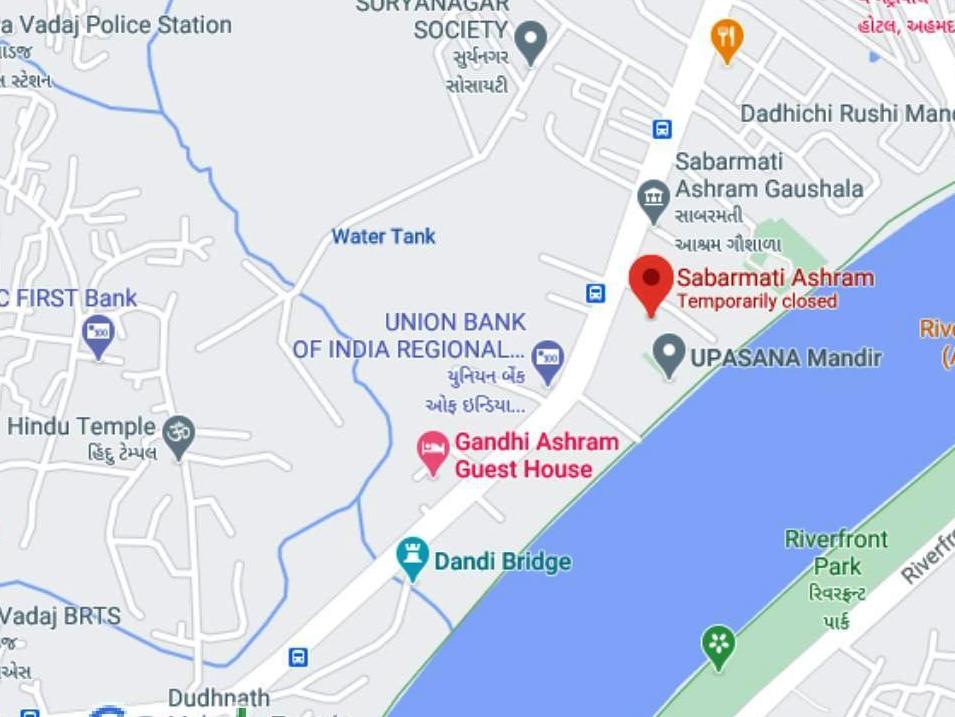
Travel Tips
- Sabarmati Ashram is located in Ahmedabad and a major landmark of the city. Sardar Ballav Bhai Patel International airport is in the city and you can take a bus or cab from the airport to reach the ashram easily.
- Ahmedabad Junction is the main railway station of the city which is barely 6 kilometers from Sabarmati Ashram. Ahmedabad Junction is well connected to all parts of the country.
- The city has excellent road connectivity with major cities in the country especially Western India with cities like Mumbai, Surat, Vadodara, Pune, Jaipur, Indore and Udaipur.
- The Ashram is open to the public throughout the year including Sundays and holidays and the visiting hours is from 8.30 AM to 6-30 PM.
- There is no entry fee. Free guided tours are arranged for school children if the ashram is informed in advance.
- Sabarmati Ashram can be visited any time of the year. Though Ahmedabad is quite hot in summer, yet the good number of trees in the Ashram complex and the simple environment is not that unfriendly on a hot day.
- You must note that the entire Ashram is a no smoking zone.

